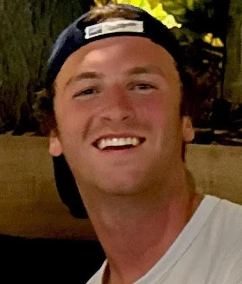
 January 25, 2016 Press Contacts William Echikson +32475669736 [email protected] PARIS—The United States Holocaust Memorial Museum...
January 25, 2016 Press Contacts William Echikson +32475669736 [email protected] PARIS—The United States Holocaust Memorial Museum...
January 25, 2016
Press Contacts
William Echikson
+32475669736
[email protected]
PARIS—The United States Holocaust Memorial Museum is partnering with UNESCO to mark this year’s International Holocaust Remembrance Day under the theme “Propaganda and the Holocaust: From Words to Genocide.”
For this occasion, the Museum is bringing a French-language version of its exhibition on Nazi propaganda to UNESCO’s Paris headquarters. The exhibition will open on January 27 as part of UNESCO’s International Holocaust Remembrance Day commemoration and run for three weeks in the Miro Hall. Titled State of Deception: The Power of Nazi Propaganda, it remains relevant today when many of the techniques and messages developed by the Nazis are being recycled and reused.
“While the Nazis are gone, the deadly potential of propaganda lives on,” Museum Director Sara Bloomfield and UNESCO Director Irina Bokova said in a joint statement. “It is even more dangerous in this interconnected world, when heinous content can be disseminated and consulted anywhere anytime. We need to learn the lessons of the past, to strengthen our collective capacity to respond to violent extremism.”
The Nazi Party developed a sophisticated propaganda machine that deftly spread lies about its political opponents, Jews, and the need to justify war. But Nazi propaganda was complex. For the Nazis to achieve power and pursue their racial policies and expansionist war efforts, they needed to paint a much more nuanced picture—one that would appeal to broad swaths of the population, not just a fanatical extreme. State of Deception: The Power of Nazi Propaganda draws visitors into a rich multimedia environment vividly illustrating the insidious allure of much of Nazi propaganda.
“Adolf Hitler was an avid student of propaganda and borrowed techniques from the Allies in World War I, his Socialist and Communist rivals, the Italian Fascist Party, as well as then-contemporary advertising,” says exhibition curator Steven Luckert, who will be in Paris for the exhibition opening and participate on a panel during the UNESCO commemoration. “Drawing upon these models, he successfully marketed the Nazi Party, its ideology, and himself to the German people.”
Shortly after World War I, the Nazi Party began to transform itself from an obscure, extremist group into the largest political party in democratic Germany. Hitler early on recognized how propaganda, combined with the use of terror, could help his radical party gain mass support and votes. He personally adapted the ancient symbol of the swastika and the emotive colors of red, black, and white to create the movement’s flag. In doing so, Hitler established a potent visual identity that has branded the Nazi Party ever since.
After seizing power, the Nazi Party took over all communications in Germany. It marshaled the state’s resources to consolidate power and relentlessly promote its vision of a “racially pure,” utopian Germany that needed to defend itself from those who would destroy it. Jews were cast as the primary enemies, but others, including Roma, homosexuals, Jehovah’s Witnesses, and mentally and physically disabled persons, were also portrayed as threats to the “national community.”
As Germany pushed the world into war, Nazi propaganda rationalized Germany’s territorial expansion as self-defense. Jews were depicted as agents of disease and corruption. The Nazis’ actions against them, in Germany and occupied countries, were promoted as necessary measures to protect the population at large.
The Museum and UNESCO are encouraging visitors to the exhibition in Paris and globally to consider how they will honor the legacy of the Holocaust to combat hate speech and religious violence. Audiences can use #IRememberBy and #Memory2Action to share how they will make choices and act to apply these lessons in their lives for a safer future.
The exhibition is on display at UNESCO, 7 Place de Fontenoy, 75007 Paris. Opening hours are 9 a.m. to 6 p.m., Monday through Friday.
About the Museum
The United States Holocaust Memorial Museum works to confront hatred, prevent genocide, and promote human dignity. Its educational programs and global impact are made possible by generous donors.
About UNESCO
UNESCO, the United Nations Educational, Scientific and Cultural Organization, was founded in 1945 with the mission to contribute to peace and security by building intercultural understanding through protection of heritage and support for cultural diversity and protecting freedom of expression, an essential condition for democracy, development, and human dignity.
Content from United States Holocaust Memorial Museum
Originally published at https://www.ushmm.org/information/press/press-releases/museum-exhibition-on-nazi-propaganda-to-open-at-unesco-headquarters-in-pari
originally published at HUMAN RIGHTS - USA DAILY NEWS 24

